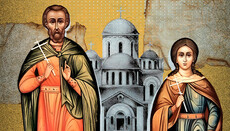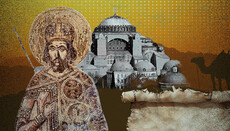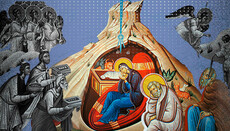How to find Christian Byzantium in Muslim Turkey
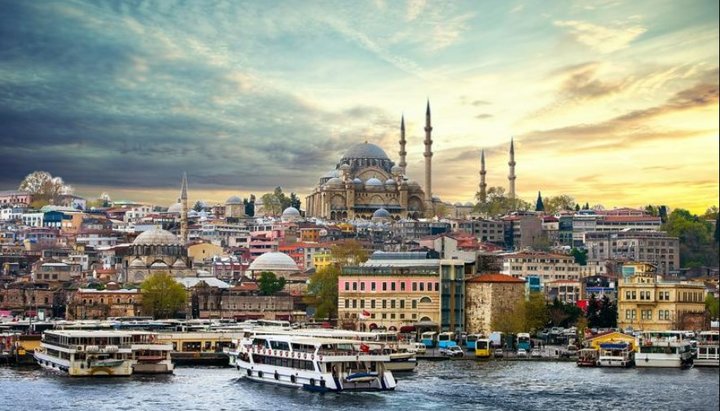
The epidemic will subside; we'll again rush to the resort, the most popular of which is Turkey. Do we know how many shrines this holy land, former Byzantium, holds?
September 9 is traditionally considered the Day of Remembrance of Russian soldiers who died in the defenсe of Sevastopol and in the Crimean (Eastern) War of 1853-1856. A lot of various studies and monographs have already been written about the reasons for the outbreak of this war, both by publicists and professional historians. We will not delve further into this research but speak about a different thing.
I would like to note that among the reasons (albeit perhaps not decisive) that provoked the declaration of war on Russia by England, France and the Ottoman Empire was its aspiration to support the Christian peoples in the liberation struggle against the Turkish yoke, as well as the desire to obtain the right of patronage over Ottoman Christians and shrines located on the territory of a Muslim state. These goals were not fully realized then. Today we see a completely different picture of the world: the Balkan peoples are free, they can freely practise the Orthodox faith, but a significant part of the ancient Christian shrines still remains in the possession of Muslims. That is let’s go in search of Christian Byzantium in the territory of modern Turkey.
Hagia Sophia
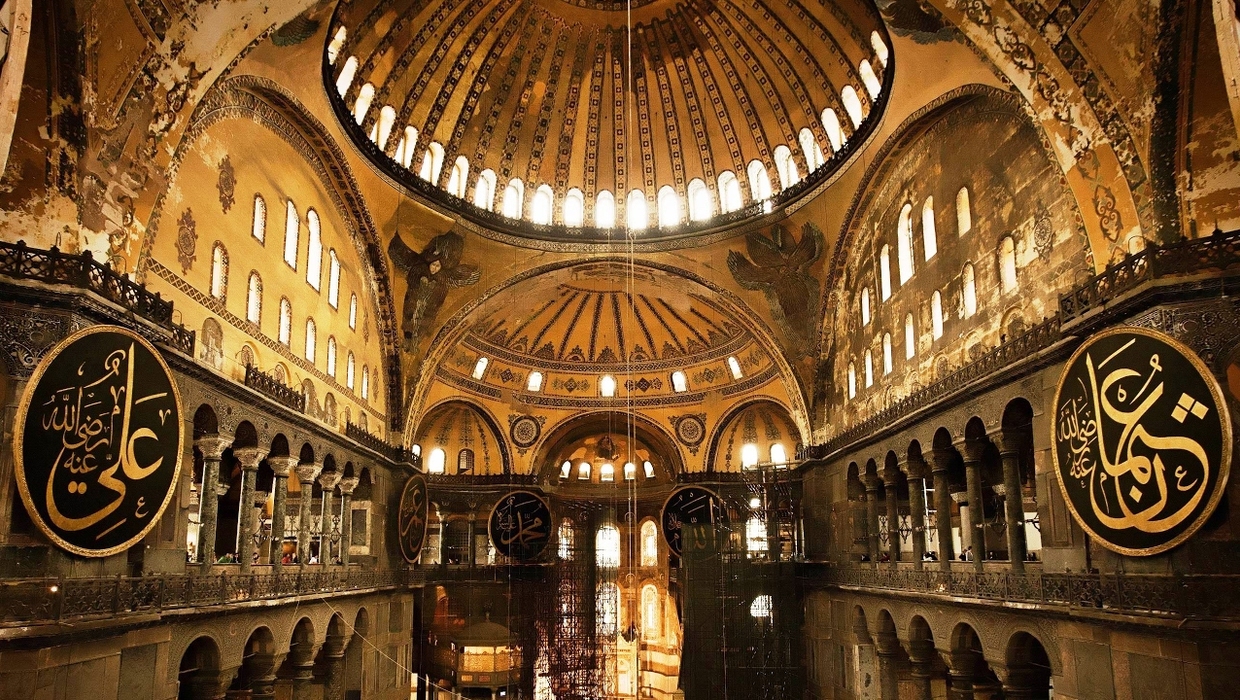
Naturally, the majestic Hagia Sophia Cathedral of Constantinople, the main and most recognizable shrine of the ancient capital, recently reconverted into a mosque, immediately comes to mind.
In view of the fame of the temple, I will not dwell on it in detail, only in the context of the occasion that served to write this article, I would like to note that the famous Blue Mosque, built in the 17th century, was practically copied from Hagia Sophia. You do not need to be an expert in architecture to understand this – just look at the photographs: it is a “Chinese” analogue of a Christian church.
No wonder St. Nicholas of Serbia once said that the Turks destroyed more than one culture, while not creating their own. Someone may accuse the Christian saint of being biased but even the Arabs have a saying: "A chicken is more likely to fly than a Turk learns to love."
Hagia Irene
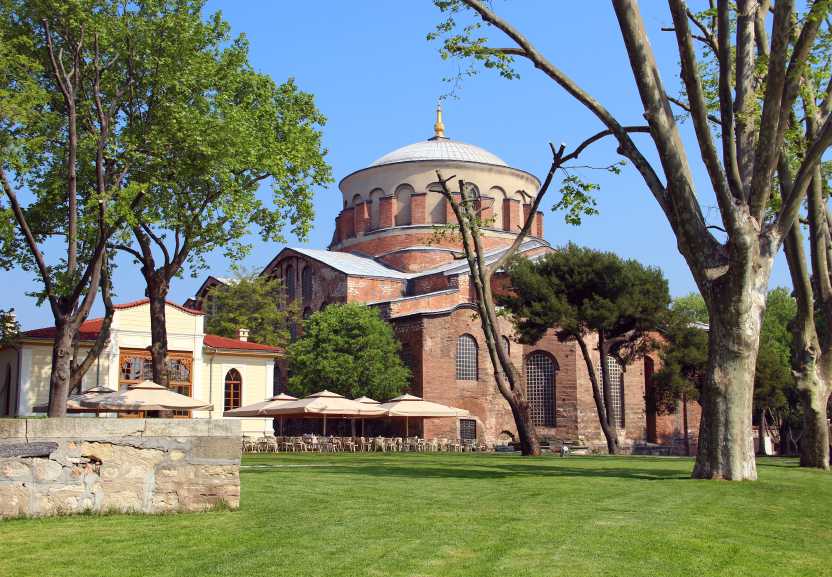
But let's leave the Turks alone and walk 50 meters north of Hagia Sophia to find the Hagia Irene Church – the site of the Second Ecumenical Council. This is one of the masterpieces of Byzantine architecture of the 4th century, representing a new type of basilica for its time – cruciform.
It is noteworthy that Hagia Irene is one of the few churches in Istanbul that has not been converted into a mosque, as it was used as an arsenal for storing weapons until the 19th century. The Hagia Irene Church today operates as a museum and concert hall. If we look at the interior of the temple, unfortunately, we will not find there any iconographic paintings or mosaics but only an image of a four-pointed cross in the central apse. All this is the work of iconoclasts rather than the Turks. The Hagia Irene Church has preserved traces of the temporary triumph of the iconoclastic heresy for centuries.
Chora Monastery – a pearl of Christian art
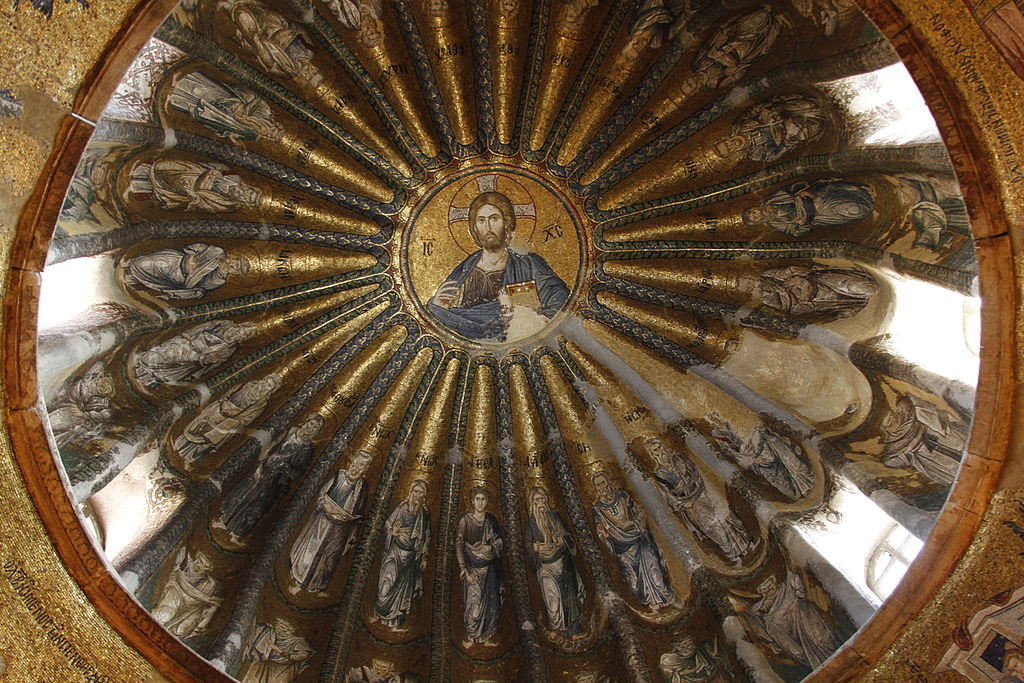
If you travel 4-5 km along the coast of the Golden Horn, then among the city quarters of Istanbul you can find the Chora Monastery and its central Cathedral of Christ the Saviour, in which ancient frescoes are better preserved in their original form than anywhere else. It was built between 1077 and 1081 by the efforts of the mother-in-law of the Emperor Alexios Komnenos.
Later, at the beginning of the XIV century, the temple was rebuilt, and the frescoes and mosaics created during this period represent an unsurpassed artistic masterpiece of the era of the Palaeologus dynasty.
Today, the Turkish authorities have converted this church into a mosque again, so let’s hope and pray to the merciful God that zealous Muslims will not destroy these unique ancient Christian iconographic images.
Pantokratoros Monastery
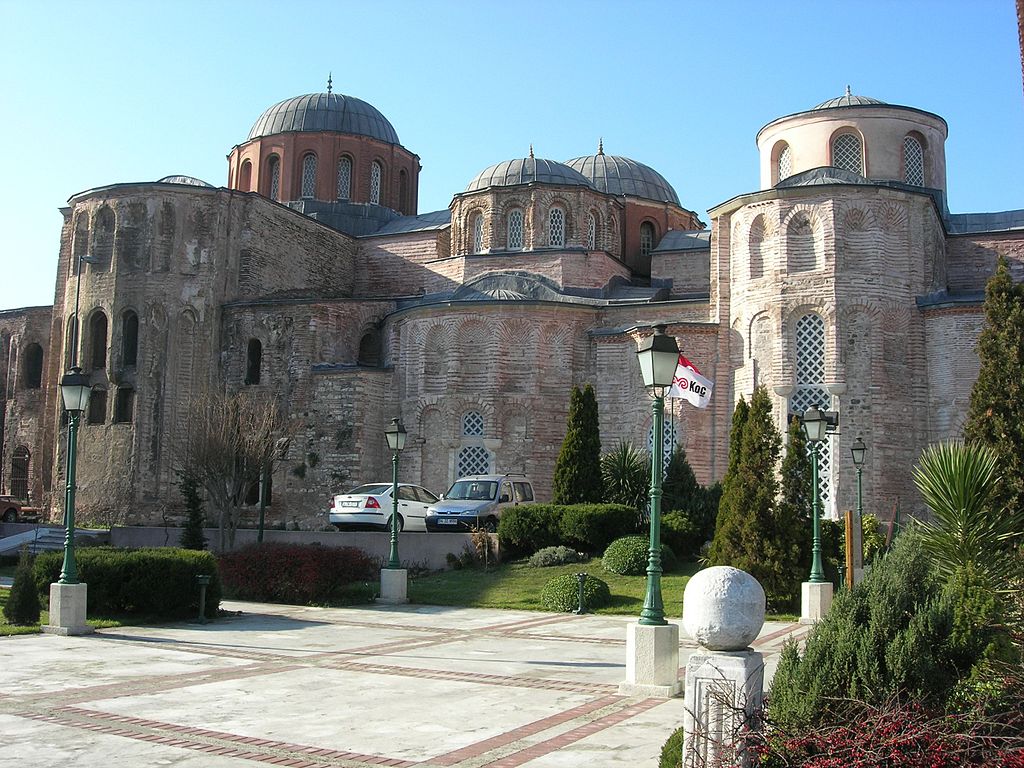
While speaking about the shrines of Constantinople, one cannot help but remember the Monastery of Pantocratoros, the second-largest monument of Byzantine architecture after the Hagia Sophia Cathedral.
The construction of the monastery began in the 12th century by the efforts of Empress Irene Komnene Doukaina. After her death, the construction was completed under the care of Emperor John II. The Kafalikon or the main temple of the monastery is dedicated to Sophia, the Wisdom of God. Both ktetors, as well as Emperor John V Palaeologus, are buried in the Archbishop Michael Chapel.
As the buildings of the monastery fell into desolation and decay by the end of the 20th century, UNESCO included them in the list of World Heritage Sites threatened with destruction. This factor played a positive role and from 2009 to 2019 the Turkish authorities carried out extensive restoration work in the monastery.
Sts. Sergius and Bacchus Church
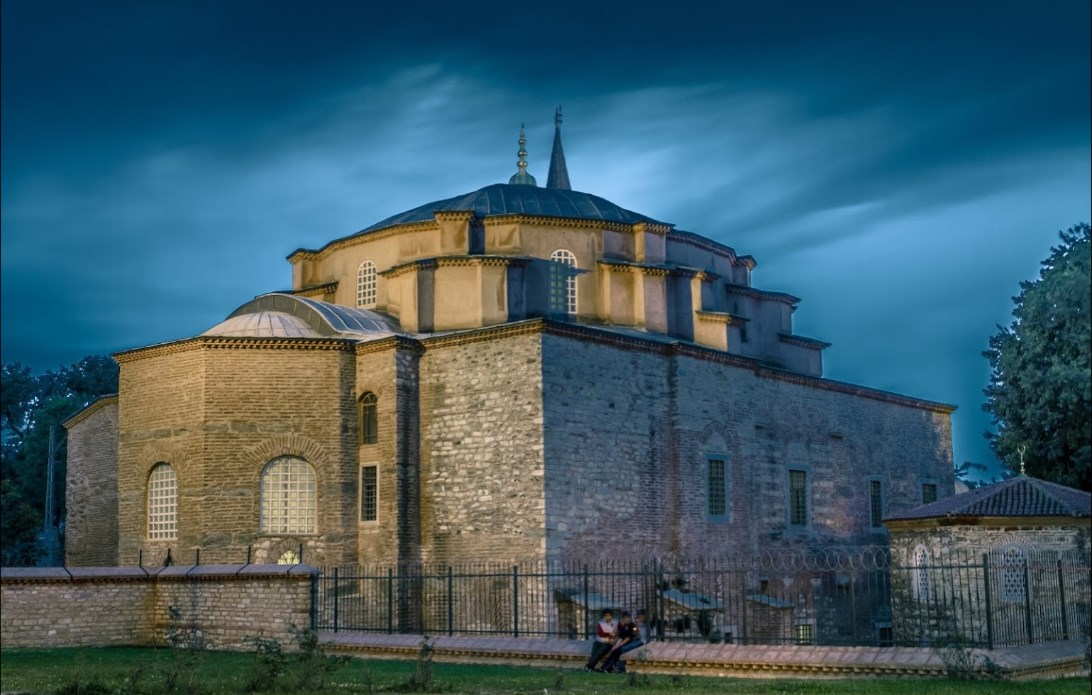
The favourite temple of the imperial couple Justinian and Theodora was the Sts. Sergius and Bacchus Church Sts. Sergius and Bacchus Church or the so-called "little Hagia Sophia", built-in 527-529 near the house where the future emperor spent his childhood.
The church was turned into a mosque in 1506, but the rich mosaics and frescoes in it were destroyed by the iconoclasts. Today, the operation of the railway next to the temple provokes the gradual destruction of this ancient Christian shrine. The Turkish authorities have not yet taken any action to preserve it.
Pammakaristos Church
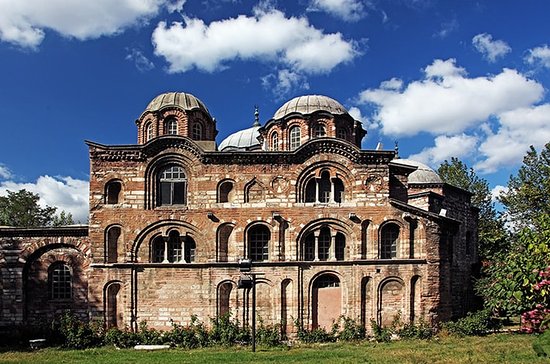
The Church of Theotokos Pammakaristos has the largest amount of Byzantine mosaics in Istanbul after the Hagia Sophia and Chora Church. It was erected in the XI century, but one of the versions says that the current building of the temple was built after the Crusaders' rule in Constantinople, i.e. after 1261.
After the fall of Byzantium, it was here that the seat of the Patriarch of Constantinople was located for some time. But in 1590, in commemoration of the conquest of Transcaucasia, Sultan Murad III turned the church into a mosque. Today it functions as a museum.
Stoudios Monastery
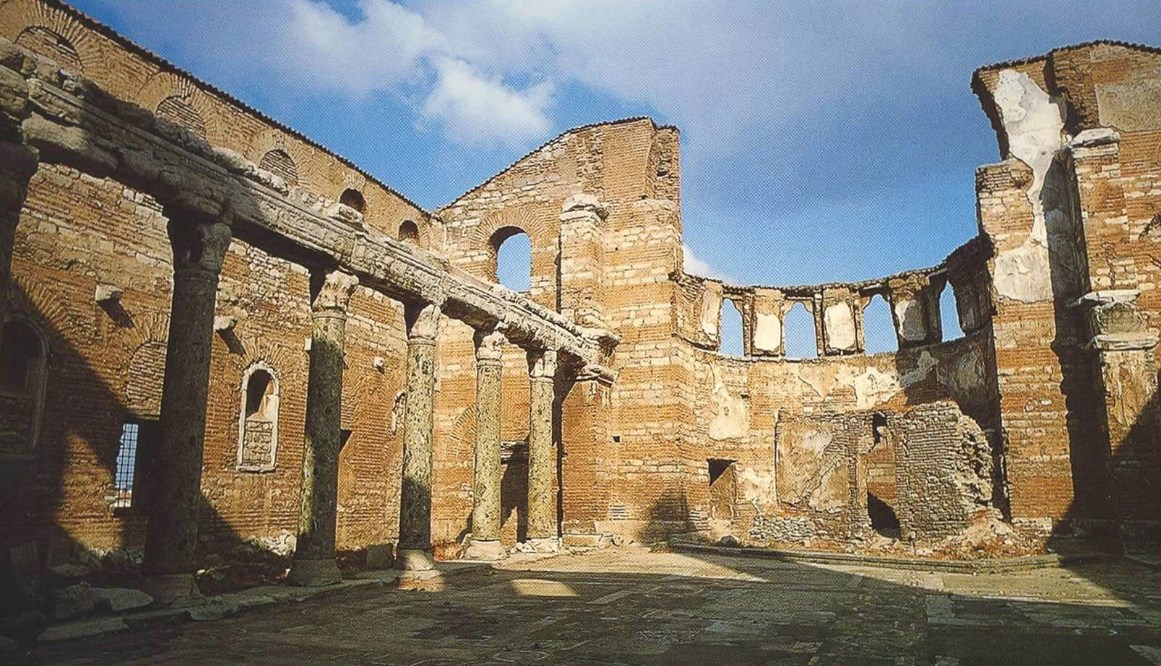
In the south of Istanbul, on the shore of the Sea of Marmara, you can find the shrubbery walls of the famous Stoudios Monastery. Founded as far back as the 5th century, it was the most significant monastery in the medieval Byzantine capital. Among the names of its abbots are the names of saints such as Theodore the Studite, Clement the Hymnographer, Nicholas the Studite, Navkratius, Plato, Evaristus, Thaddeus, Jacob of Сatania, Titus the Wonderworker, Joseph of Thessaloniki.
In the 10th-11th centuries, the Monks Simeon the Pious, Simeon the New Theologian and his disciple Niketas Stethatos asceticised at the Stoudios Monastery. After the fall of Byzantium, as a result of two fires, an earthquake and the dismantling of the monastery buildings by the local population to repair their houses, only four walls of the cathedral church of John the Baptist remained, which we can observe today.
* * *
Ancient Constantinople can boast of many shrines, but I would also like to say a few words about those outstanding places of Christian history that can be found in other regions of Turkey.
Nicaea – the venue of the Ecumenical Councils
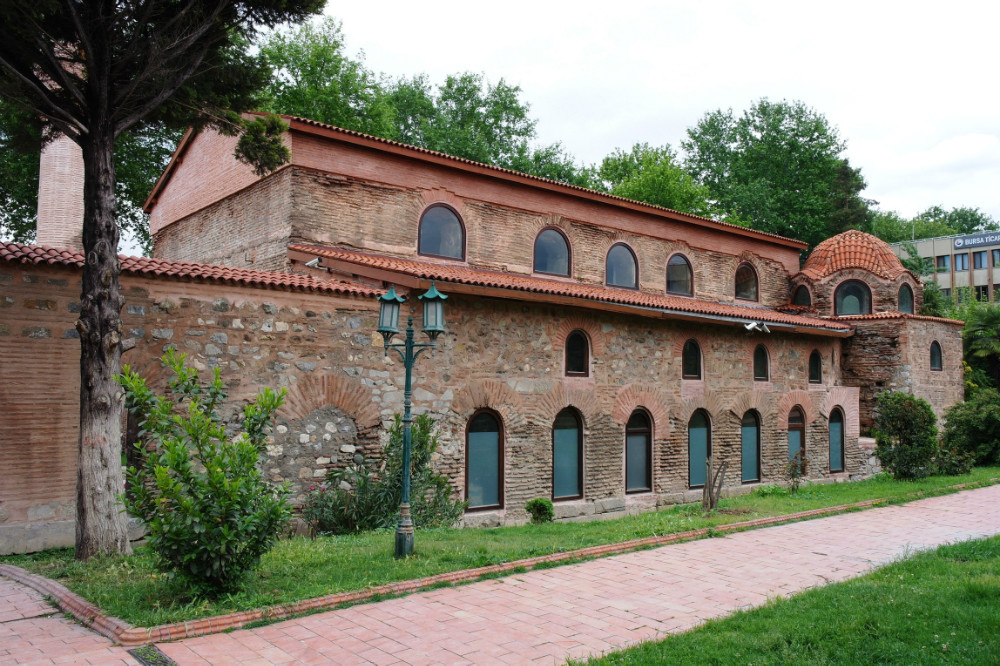
The town of the same name is located on the shore of Lake Iznik. Today it is a small district centre. And in ancient times it was a fairly large city of Nicaea – the venue of the First and Seventh Ecumenical Councils.
Here you can find the traces of the former greatness – the walls of the Church of Hagia Sophia, which still remember Empress Irene and St. Tarasius, who convened the Council to oppose the iconoclastic heresy. It was converted into a mosque after the fall of the city to the Ottoman Turks in 1337 and functioned as such until it was made a museum in 1935. Since November 2011, it again has been operating as a mosque.
Ephesus – the resting place of John the Theologian
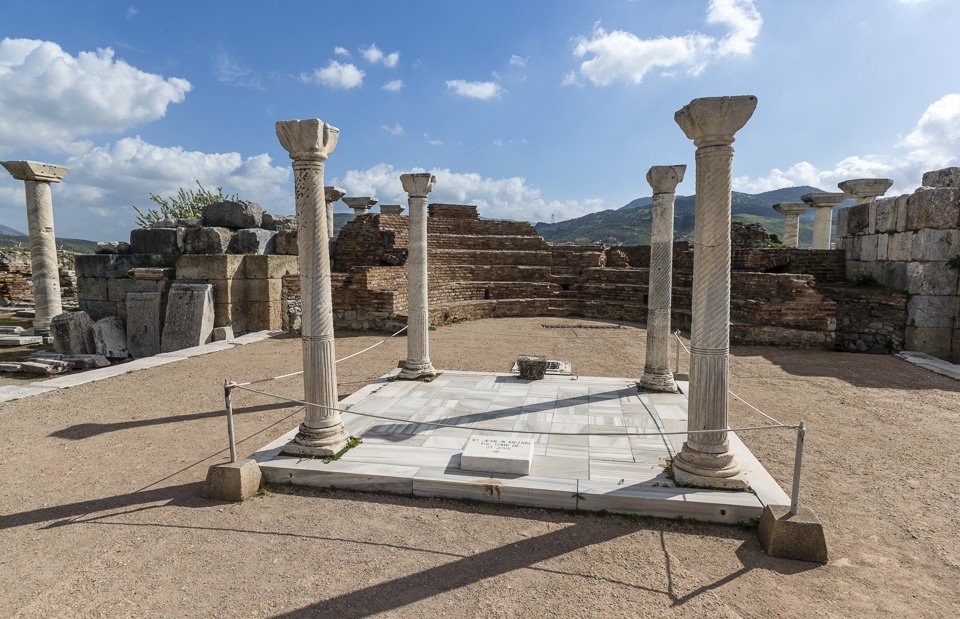
Speaking about the Ecumenical Councils, we can't help but mention the ancient Ephesus (Selçuk, Izmir Province). This is where Apostle John the Theologian lived with the Mother of God.
Today it will not be difficult to find the Apostle's tomb, the house of the Virgin Mary and the ruins of the basilica of Ephesus bishops – the world's first temple dedicated to the Virgin Mary and built before the Third Ecumenical Council.
Here, we can visit the grotto of Seven Sleepers of Ephesus, who were buried alive in a cave and slept there for several centuries.
Trebizond
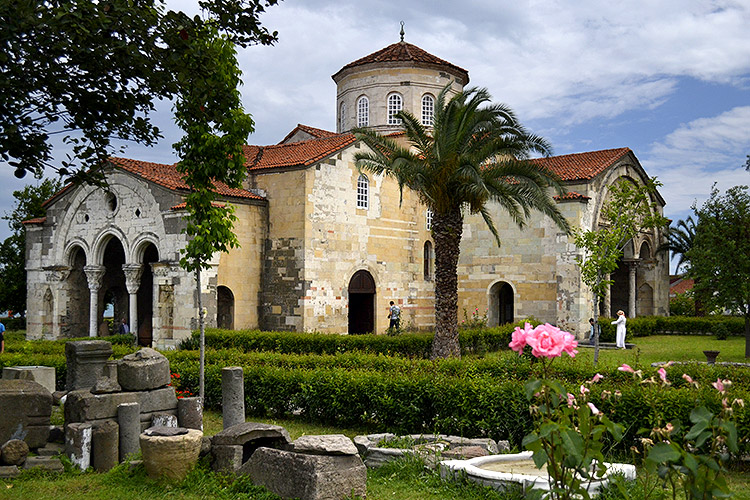
Hagia Sophia of Trebizon (now Trabzon), formerly a Greek Orthodox church built in 1238-1263, is located on the Black Sea coast to the northeast of Turkey. It is regarded as an outstanding monument of late Byzantine architecture and the largest temple of one of the oldest metropolises of the Church of Constantinople.
After Mehmed II conquered the city in 1461, the church was possibly converted into a mosque and its frescos were whitewashed. In the 50-60s of the twentieth century, specialists from the University of Edinburgh carried out restoration work in the church, after which it was turned into a museum, and in April 2013 – again into a mosque.
Inaccessible Panagia Sumela
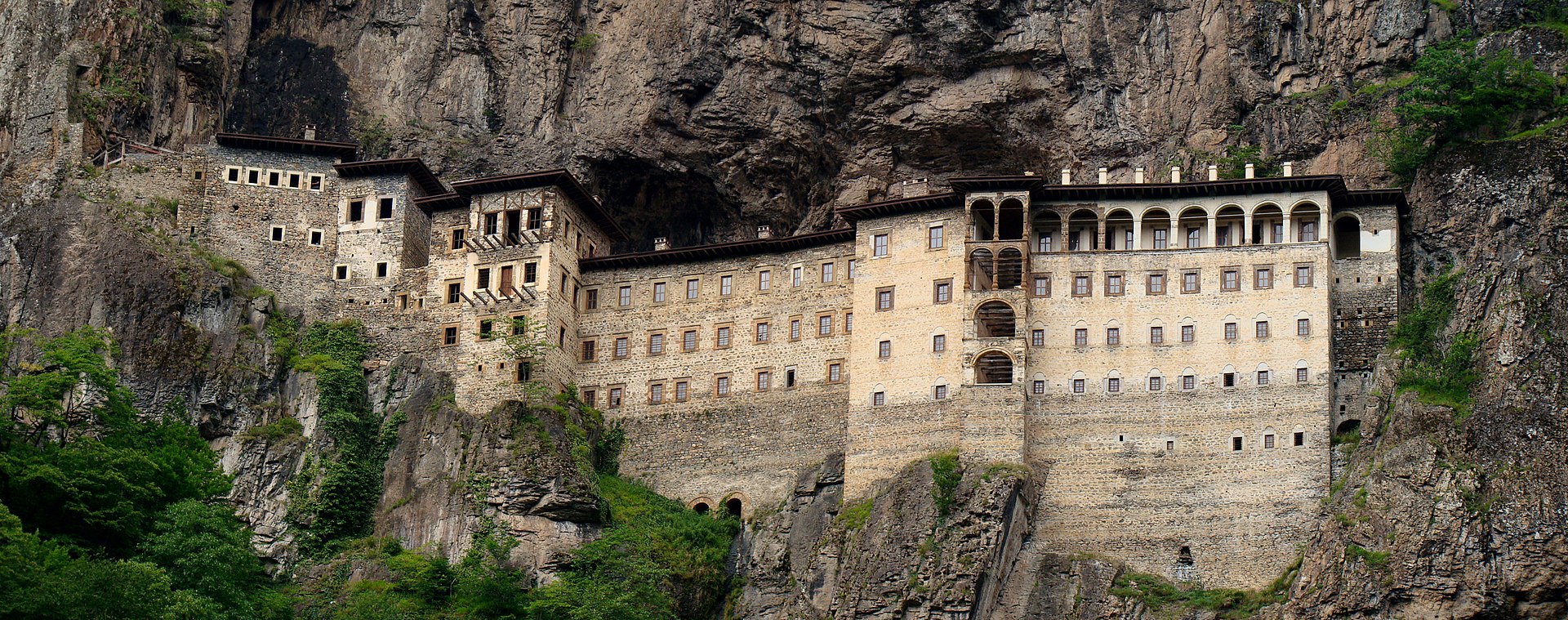
Just south of Trabzon, there is one of the world's most inaccessible monasteries – Panagia Sumela, founded by a monk named Barnabas back in the IV-V centuries. It became famous for an icon of the Virgin Mary known as the Panagia Gorgoepekoos, said to have been painted by the Apostle Luke. In the 6th century, after an Arab raid, St Sophronius of Jerusalem was engaged in the restoration of the monastery. All the privileges granted to is by the Byzantine rulers were confirmed by Sultan Selim I - grandson of Mehmed the Conqueror, as a result of which the monastery reached its peak in the 18th-19th centuries.
Monastic life here ended in 1922 due to the Greek-Turkish population exchange. The modern Turkish authorities were extremely hostile to the pilgrimage of Orthodox Christians here, which became possible only in 2007, and in 2010 a liturgy was served at the Monastery of Panagia Sumela for the first time in almost a hundred years.
In 2015, the monastery was closed for restoration work, however, as we know, at this time some vandals damaged the most precious frescoes, scratching out the faces of the saints.
* * *
One can write about the Christian shrines of modern Turkey endlessly. I did not specifically mention such famous places as Cappadocia, which deserve a separate publication. I just wanted to remind you that many, including the saints, who we now venerate and whose names bear, walked this land. Many events from the lives of the saints took place here.
This is where Saint Nicholas the Wonderworker and Apostle Paul were born, who later wrote epistles to the Colossians and Galatians, who also resided within the borders of present-day Turkey. The great Cappadocians Basil the Great, Gregory of Nyssa and Gregory the Theologian and Timothy of Ephesus, whom the Apostle Paul addressed two Epistles to Timothy, lived and preached here.
This land is much closer and dearer to us than it might seem at first glance. And it is not at all about the warm sea and the gentle sun. I really want our compatriots, who often fly to friendly Turkey, to know and visit places dear to Christians, which can imbue the soul with history and tell us about the former greatness of the once existing Christian empire – Byzantium.

